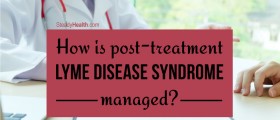
Post-polio syndrome is also known as post-poliomyelitis syndrome or post-polio sequelae. It is a health condition that affects approximately 25–50% of people who have previously contracted poliomyelitis. Poliomyelitis is a viral infection of the nervous system, caused by infection with a member of the genus Enterovirus, the group of RNA viruses that colonize the gastrointestinal tract. Polio was once a very dangerous disease, easy to spread from person to person, responsible for paralysis and death. The vaccine for polio was introduced in the early 1950’s and this disease is greatly reduced today, especially in developed countries. However, risk of post-polio syndrome is still high for people who had polio at young age. These people may experience certain late effects of the disease many years after their recovery from polio.
Causes of post-polio syndrome
The exact cause of post-polio syndrome is yet unknown. Scientists have established a link between the post-polio syndrome and polio disease, but what exactly causes symptoms of post-polio syndrome after so many years, remains a mystery. There are many different theories upon this subject, but the most probable one relies on the idea of degenerating nerve cells. The poliovirus attacks particular neurons in the brainstem and the anterior horn cells of the spinal cord. To compensate the loss of these neurons, responsible for activation of muscles, survivors sprout new nerve terminals to the muscle fibers. As a result, the movement is restored but it adds stress to the neuronal cell body resulting in the slow deterioration of motor units.
Symptoms of post-polio syndrome
Typically the first symptoms of post-polio syndrome appear 15 to 30 years after recovery from the original polio disease. Common signs and symptoms include: slowly progressive muscle weakness, persistent general fatigue, muscle atrophy, breathing problems, problems with swallowing, sleep-related disorders, and decreased tolerance of cold temperatures.
The symptoms are progressive and they develop very slowly. It is estimated that more than 440,000 polio survivors in the United States may be at risk for post-polio syndrome. The prevalence rate is somewhere from25 percent to 50 percent.
Treatment of post-polio syndrome
Treatment is usually tailored for a specific patient, as the signs and symptoms drastically vary from one to another. The treatment is aimed to manage the symptoms of the disease. There is no evidence about the possibility to prevent the disease, but the general recommendation to polio survivors is to get the proper amount of sleep, keep up with a well-balanced diet, and avoid unhealthy habits.
Treatment of post-polio syndrome involves physical therapy and low-impact exercises to strengthen the muscles and get a relief from muscular fatigue. Occupational therapy is also beneficial and it focuses on modifying patient’s home environment. Speech therapy and treatment of sleep disorders are also beneficial to the patient. Sometimes, doctors may prescribe medicines such as Aspirin and anti-inflammatory drugs, to ease muscle and joint pain.

















Your thoughts on this
Loading...